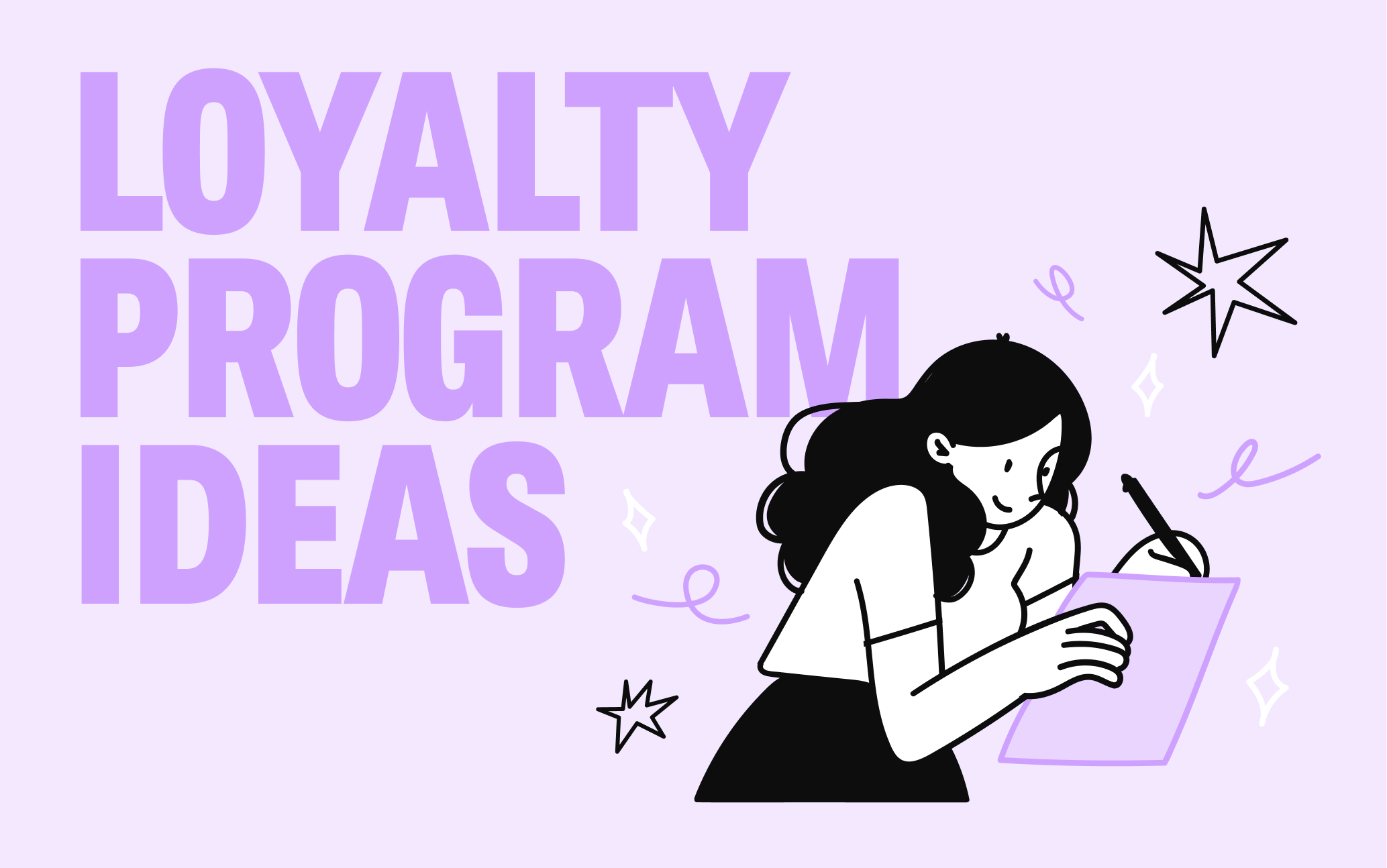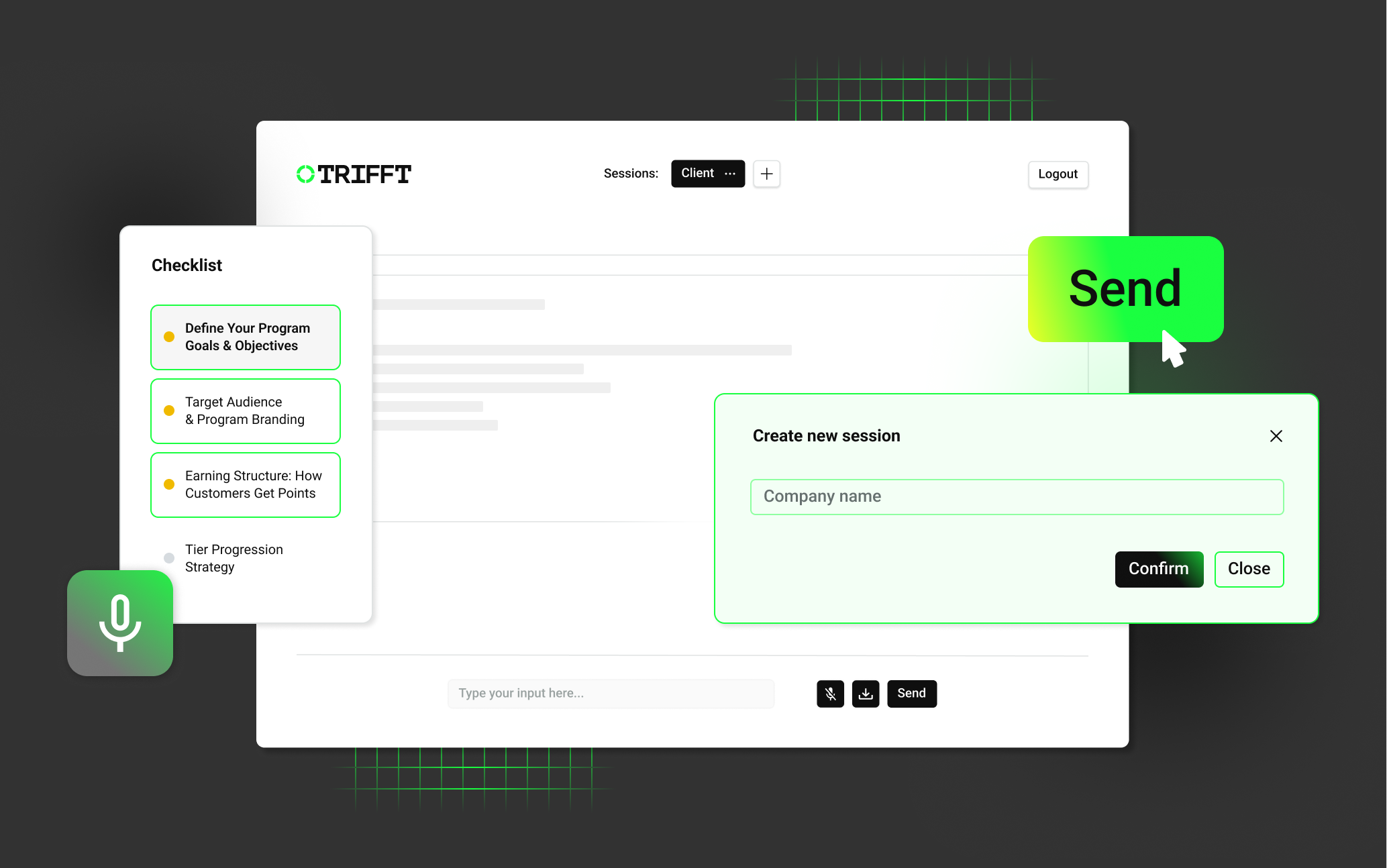Are your loyalty efforts paying off? Are the results justifying the investment you’ve put into them? Do you know how you can tell? If you can’t answer “Yes” to all three questions, keep reading to discover how to measure the effectiveness of your loyalty program and the key metrics that tell you if you’re moving the needle in the right direction.
Using a Loyalty Platform is a Great Start (But Is It Working?)
Customer loyalty programs are powerful tools for retention, repeat business, increasing customer lifetime value (CLV) and promoting brand advocacy. However, many businesses launch these programs with great enthusiasm but then struggle to effectively measure their real impact. Without a good understanding of how your loyalty program engages with customers, it's impossible to know what's working, what's not, and where to invest your valuable resources.
That’s our focus here — the essential metrics e-commerce businesses should track to determine success and optimize their customer loyalty programs, maximizing their potential and turning them into a powerful growth engine.
Why Measuring Loyalty Program Success is Crucial
Before getting into the specific metrics, let's understand why this measurement is a must for any brand using a loyalty platform:
- Justify ROI: Let’s start with the obvious. If an investment isn’t at least paying for itself (and bringing in a bit more), then why bother? Proving the financial benefits of any program to stakeholders — or just to yourself — is mandatory.
- Identify Strengths & Weaknesses: Even if things look good from the financial perspective, the data still has a story to tell. Pinpoint which aspects of your program are resonating with customers and which areas need improvement.
- Optimize & Iterate: It’s easier to focus time, attention and resources when you know where the problem is. Make data-driven decisions for program enhancements, rather than relying on guesswork.
- Resource Allocation: No one is in business to waste money. Ensure your marketing, development and customer service efforts related to the loyalty program are well-spent and efficient.
Key Metrics for Your Loyalty Program
By understanding and regularly monitoring certain crucial indicators, you'll be able to identify what's working, pinpoint areas for improvement and ultimately maximize your return on investment in customer loyalty.
Here are the critical metrics you should be tracking to gauge the health and effectiveness of your loyalty program:
Enrollment Rate
- Definition: The percentage of your total customer base (or new customers within a period) who have successfully joined your loyalty program.
- Why it matters: This is your foundational metric. A high enrollment rate indicates that your program is visible, easy to join and that its initial value proposition is appealing to your customers.
- Actionable Insight: A low enrollment rate suggests issues with program promotion (e.g., not visible on your website, during checkout, or in marketing communications) or that the perceived benefits aren't strong enough to entice sign-ups.
Active Member Rate
- Definition: The percentage of your enrolled loyalty members who have actively engaged with the program (e.g., earned points, redeemed rewards, participated in exclusive events) within a specified timeframe (e.g., last 30, 60, or 90 days).
- Why it matters: Enrollment is just the first step. The active member rate shows ongoing engagement and the program's continued relevance to your members.
- Actionable Insight: A declining active member rate suggests members might be losing interest, rewards aren't compelling enough or communication about earning & redemption opportunities is lacking.
Redemption Rate
- Definition: The percentage of earned loyalty rewards (points, coupons, exclusive access) that are actually redeemed by your members.
- Why it matters: A high redemption rate indicates that your rewards are valuable, desirable and easy for customers to claim and use. It also shows that customers understand the redemption process.
- Actionable Insight: A low redemption rate can signal that your rewards aren't appealing, the redemption process is too complicated or members are unaware of their available rewards.
Repeat Purchase Rate (Loyalty Members vs. Non-Members)
- Definition: The percentage of customers who make more than one purchase from your store. You should always compare this rate specifically for your loyalty members versus your non-loyalty customers.
- Why it matters: This is direct evidence of your program's impact on customer retention. The core goal of a loyalty program is to encourage customers to return and buy again.
- Actionable Insight: If your loyalty members aren't showing a significantly higher repeat purchase rate than non-members, the program may not be effectively driving the desired behavior.
Average Order Value (AOV) for Loyalty Members
- Definition: The average monetary value of each order placed by your loyalty program members.
- Why it matters: Loyalty programs often aim to encourage larger purchases through incentives like bonus points for higher spend thresholds or tiered rewards that unlock with greater cumulative spending. A higher AOV for members indicates success in this area.
- Actionable Insight: If the AOV for loyalty members isn't noticeably higher than for non-members, consider introducing or adjusting incentives that encourage larger basket sizes.
Customer Lifetime Value (CLV) for Loyalty Members
- Definition: The total revenue a business can reasonably expect to generate from a single loyalty customer account over the entire period of their relationship with your brand.
- Why it matters: This is arguably the ultimate measure of long-term customer value driven by your program. A successful loyalty program should demonstrably increase CLV compared to non-members.
- Actionable Insight: Continuously monitor CLV to ensure your program is fostering genuinely valuable, long-term customer relationships. If there isn’t much movement, re-evaluate your long-term engagement strategies.
Churn Rate (for Loyalty Members)
- Definition: The percentage of loyalty members who stop engaging with your brand or program over a given period (e.g., no purchases or activity for 6 months).
- Why it matters: While loyalty programs reduce churn, it's still important to track it within your member base. A high churn rate identifies potential issues with program fatigue, decreasing relevance or a weakening overall customer experience.
- Actionable Insight: A rising churn rate among loyalty members necessitates proactive re-engagement strategies or a re-evaluation of the program's core appeal.
Net Promoter Score (NPS) / Customer Satisfaction (CSAT)
- Definition: NPS measures customer loyalty by asking how likely customers are to recommend your brand or program on a scale of 0-10. CSAT measures satisfaction with a specific interaction or overall experience.
- Why it matters: Loyalty programs should not only drive purchases but also cultivate brand advocates. High NPS and CSAT scores among loyalty members indicate that the program is enhancing the overall customer experience and creating promoters.
- Actionable Insight: Low scores suggest that while customers might be engaging transactionally, the emotional connection or overall satisfaction isn't where it should be, requiring broader improvements.
Program Return on Investment (ROI)
- Definition: This financial metric compares the total financial gains generated by the loyalty program (e.g., increased sales from repeat purchases, higher AOV, reduced churn value) against its total costs (platform fees, reward costs, marketing, administration).
- Why it matters: The bottom-line justification for the program's existence. A positive ROI proves the program's value and justifies continued investment.
- Actionable Insight: Regularly calculate ROI to ensure your program is financially viable and to make informed decisions about budget allocation and future scaling.
Tools for Measurement
Now that you know what to measure, it’s time to turn to how. Fortunately, tracking these metrics is easier than ever with the right tools:
- Loyalty Platform Dashboards: Most dedicated customer loyalty platforms offer robust, built-in analytics and dashboards that track many of these key metrics automatically.
- E-commerce Analytics (e.g., Google Analytics, Adobe Analytics): These tools provide broader insights into site behavior, conversion rates and customer segments, which can be cross-referenced with your loyalty data.
- CRM Systems: Your Customer Relationship Management (CRM) system can provide a comprehensive view of individual customer journeys, allowing for deeper analysis of CLTV and personalized insights.
Turning Data into Actionable Insights
The real power of collecting so much data lies in using it to refine and improve your program. When it’s time to apply what you’ve learned going forward, always use:
- Regular Review: Make it a habit to consistently monitor your key metrics, looking for trends, anomalies, and opportunities.
- A/B Testing: Don't be afraid to experiment! A/B test different rewards, communication strategies, or program structures to see what resonates most with your audience.
- Feedback Loops: Combine your quantitative data with qualitative feedback gathered through customer surveys, reviews, and direct interactions. This provides context and a deeper understanding.
- Iterative Improvement: Remember that a loyalty program is not a "set it and forget it" solution. It requires continuous monitoring, adaptation, and improvement based on the insights you gain.
Measure, Improve and Grow!
Like any other digital marketing tool, a successful e-commerce loyalty program should be judged by the results it delivers. By focusing on these core metrics, you can move beyond surface-level performance to get even better results and truly understand your program’s impact.
But measurement is only useful if you act on the insights. Use your findings to refine reward structures, improve communication and design experiences your customers actually care about.
Need help tracking loyalty metrics or optimizing your program? Let’s talk and discover how TRIFFT helps you turn customer data into loyalty that lasts!




.jpg)



.jpg)